
How to Use 1.9 Inch IPS Full Angle TFT Display: Examples, Pinouts, and Specs
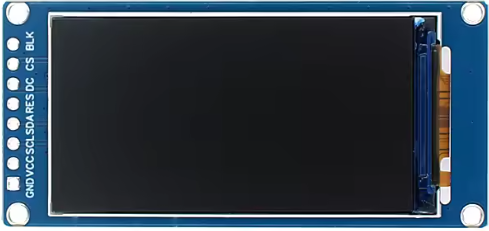
 Design with 1.9 Inch IPS Full Angle TFT Display in Cirkit Designer
Design with 1.9 Inch IPS Full Angle TFT Display in Cirkit DesignerIntroduction
The 1.9 Inch IPS Full Angle TFT Display is a compact display module with a 1.9-inch diagonal screen. It features In-Plane Switching (IPS) technology, which ensures wide viewing angles and vibrant color reproduction. This display is ideal for embedded applications, portable devices, and projects requiring a high-quality visual interface in a small form factor. Its compact size and excellent performance make it suitable for use in smart devices, handheld instruments, and DIY electronics projects.
Explore Projects Built with 1.9 Inch IPS Full Angle TFT Display
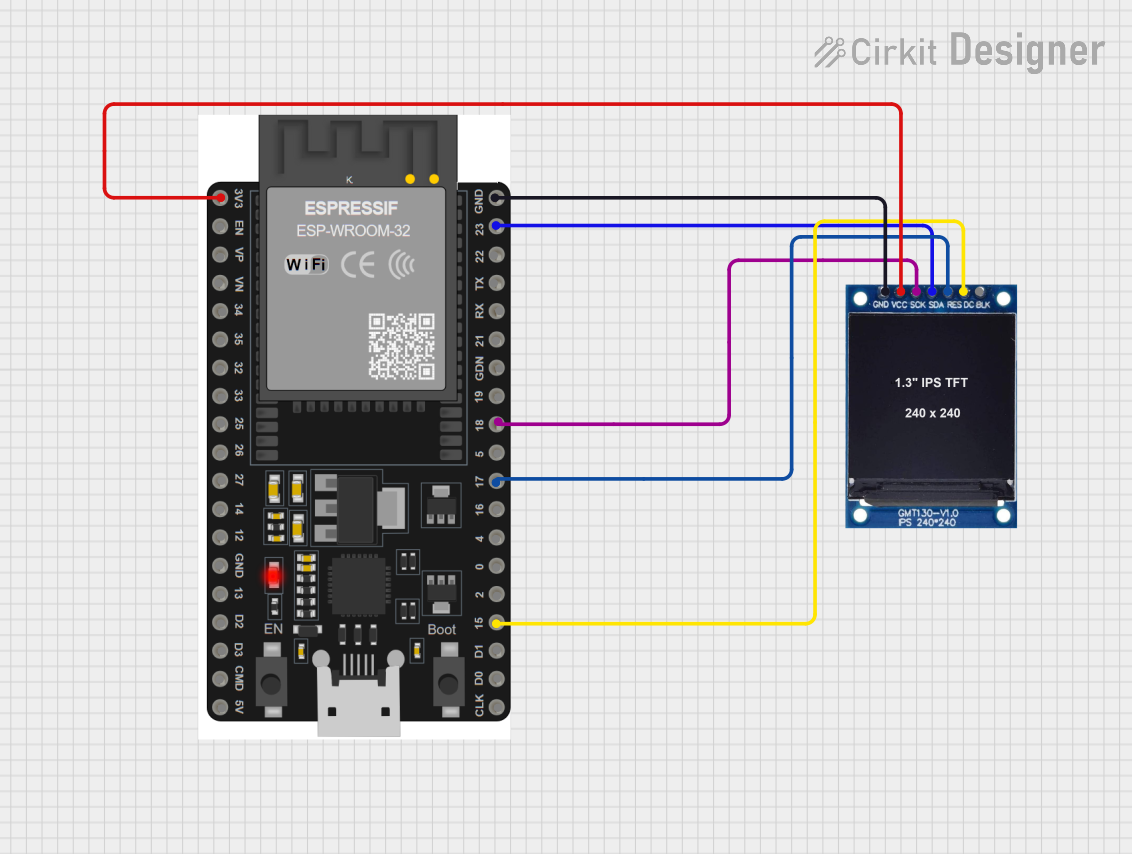
 Open Project in Cirkit Designer
Open Project in Cirkit Designer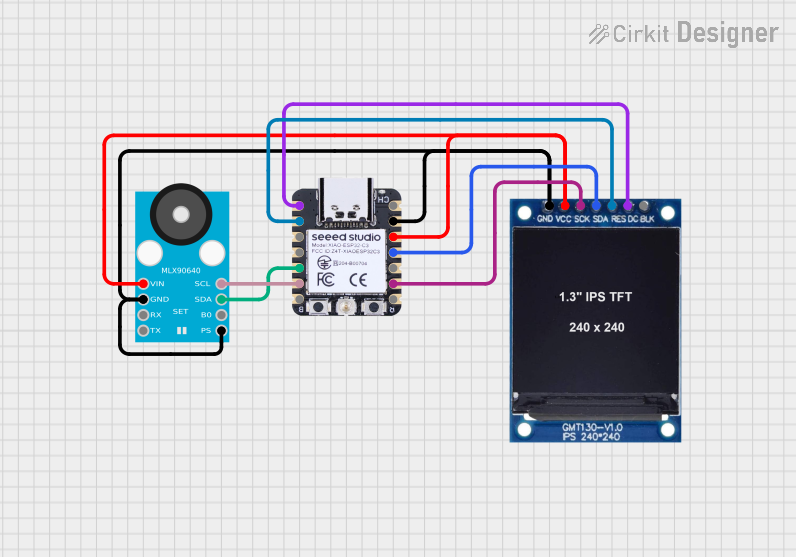
 Open Project in Cirkit Designer
Open Project in Cirkit Designer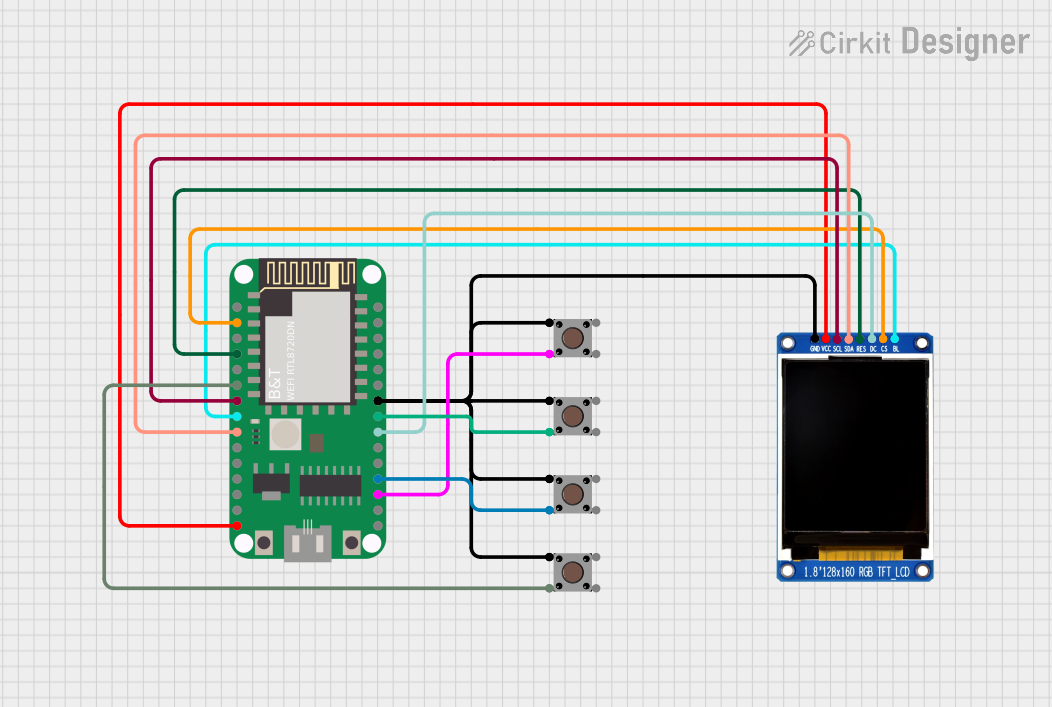
 Open Project in Cirkit Designer
Open Project in Cirkit Designer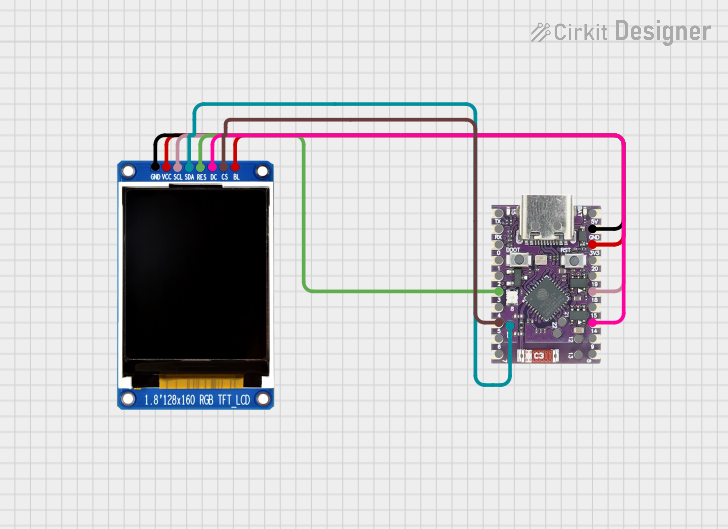
 Open Project in Cirkit Designer
Open Project in Cirkit DesignerExplore Projects Built with 1.9 Inch IPS Full Angle TFT Display

 Open Project in Cirkit Designer
Open Project in Cirkit Designer
 Open Project in Cirkit Designer
Open Project in Cirkit Designer
 Open Project in Cirkit Designer
Open Project in Cirkit Designer
 Open Project in Cirkit Designer
Open Project in Cirkit DesignerTechnical Specifications
Below are the key technical details of the 1.9 Inch IPS Full Angle TFT Display:
| Parameter | Specification |
|---|---|
| Display Type | TFT LCD with IPS Technology |
| Screen Size | 1.9 inches (diagonal) |
| Resolution | 170 x 320 pixels |
| Viewing Angle | Full angle (up to 178°) |
| Interface | SPI (Serial Peripheral Interface) |
| Operating Voltage | 3.3V (logic and backlight) |
| Backlight Current | ~20mA |
| Pixel Color Depth | 65K (16-bit RGB) |
| Driver IC | ST7789 |
| Operating Temperature | -20°C to 70°C |
| Dimensions | 40mm x 20mm x 2mm (approx.) |
Pin Configuration and Descriptions
The display module typically has the following pinout:
| Pin Name | Description |
|---|---|
| VCC | Power supply input (3.3V) |
| GND | Ground |
| SCL | Serial Clock (SPI clock input) |
| SDA | Serial Data (SPI data input) |
| RES | Reset pin (active low) |
| DC | Data/Command control pin |
| CS | Chip Select (active low) |
| BLK | Backlight control (PWM or ON/OFF) |
Usage Instructions
How to Use the Component in a Circuit
- Power Supply: Connect the
VCCpin to a 3.3V power source and theGNDpin to ground. - SPI Interface: Connect the
SCL(clock) andSDA(data) pins to the corresponding SPI pins on your microcontroller. - Control Pins:
- Connect the
RESpin to a GPIO pin on your microcontroller for resetting the display. - Use the
DCpin to differentiate between data and command signals. - Connect the
CSpin to a GPIO pin to enable or disable the display module.
- Connect the
- Backlight: The
BLKpin can be connected to a PWM-capable GPIO pin for brightness control or directly to 3.3V for constant backlight.
Important Considerations and Best Practices
- Voltage Levels: Ensure all logic signals are at 3.3V. If using a 5V microcontroller (e.g., Arduino UNO), use level shifters to avoid damaging the display.
- SPI Speed: Configure the SPI clock speed to a value supported by the display (typically up to 10 MHz).
- Initialization: The display requires proper initialization commands to function. Use libraries like Adafruit_GFX and Adafruit_ST7789 for easier setup.
- Backlight Control: Use PWM to adjust the brightness of the backlight for power efficiency.
Example Code for Arduino UNO
Below is an example of how to use the 1.9 Inch IPS Full Angle TFT Display with an Arduino UNO. This code uses the Adafruit_ST7789 library.
#include <Adafruit_GFX.h> // Core graphics library
#include <Adafruit_ST7789.h> // ST7789 driver library
#include <SPI.h> // SPI library
// Define pin connections
#define TFT_CS 10 // Chip Select pin
#define TFT_RST 9 // Reset pin
#define TFT_DC 8 // Data/Command pin
// Create an instance of the display
Adafruit_ST7789 tft = Adafruit_ST7789(TFT_CS, TFT_DC, TFT_RST);
void setup() {
// Initialize serial communication for debugging
Serial.begin(9600);
Serial.println("Initializing display...");
// Initialize the display with a 3.3V power supply
tft.init(170, 320); // Initialize with resolution 170x320
tft.setRotation(1); // Set display orientation
// Fill the screen with a solid color
tft.fillScreen(ST77XX_BLUE);
Serial.println("Display initialized!");
}
void loop() {
// Example: Draw a red rectangle
tft.fillRect(10, 10, 100, 50, ST77XX_RED);
delay(2000);
// Example: Display text
tft.setTextColor(ST77XX_WHITE);
tft.setTextSize(2);
tft.setCursor(10, 70);
tft.print("Hello, World!");
delay(2000);
}
Troubleshooting and FAQs
Common Issues and Solutions
Display Not Turning On:
- Ensure the
VCCandGNDpins are properly connected. - Verify that the power supply provides a stable 3.3V.
- Ensure the
No Image or Incorrect Colors:
- Check the SPI connections (
SCL,SDA,CS,DC,RES) for loose or incorrect wiring. - Ensure the initialization code matches the display's driver IC (ST7789).
- Check the SPI connections (
Flickering or Dim Backlight:
- Verify the
BLKpin is connected to 3.3V or a PWM signal. - Check for sufficient current supply to the backlight (~20mA).
- Verify the
Text or Graphics Not Displaying Properly:
- Confirm the SPI clock speed is within the supported range.
- Ensure the correct resolution (170x320) is set in the initialization code.
FAQs
Q: Can I use this display with a 5V microcontroller?
A: Yes, but you must use level shifters to convert 5V logic signals to 3.3V to avoid damaging the display.
Q: Is the backlight brightness adjustable?
A: Yes, you can control the brightness using a PWM signal on the BLK pin.
Q: What is the maximum SPI clock speed supported?
A: The display typically supports SPI clock speeds up to 10 MHz. Check the datasheet for exact details.
Q: Can I use this display in outdoor applications?
A: While the display has a wide operating temperature range, it is not sunlight-readable and may require additional protection from environmental factors.